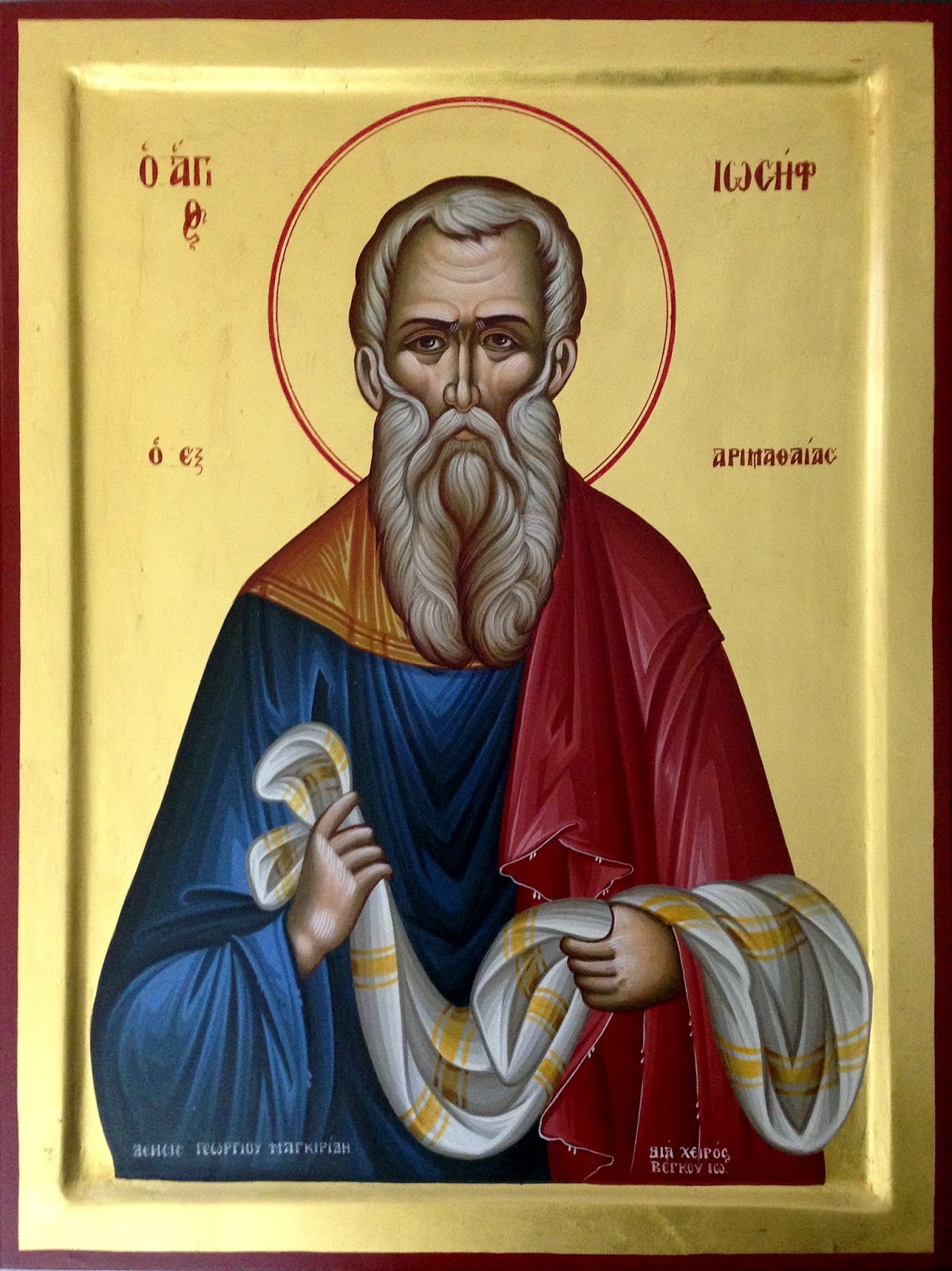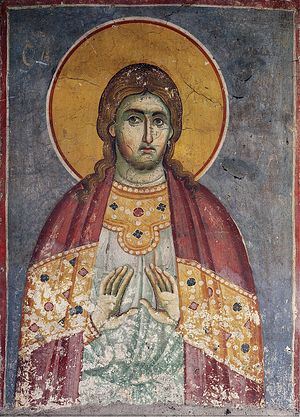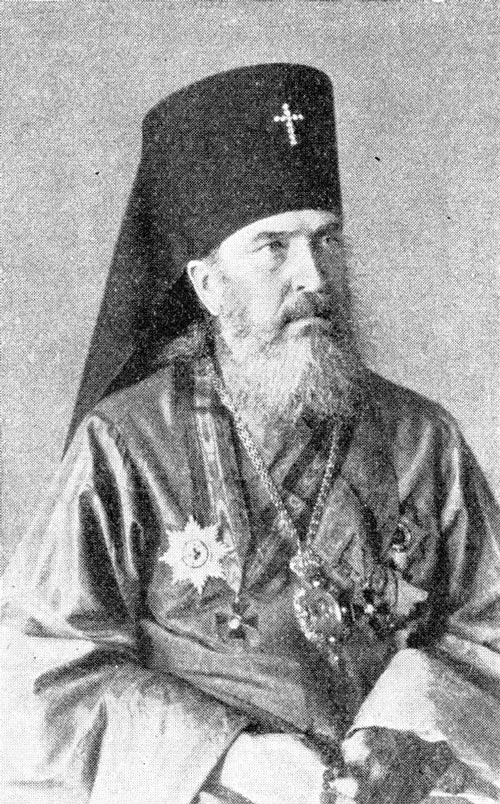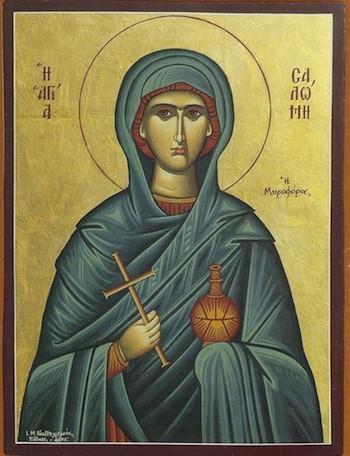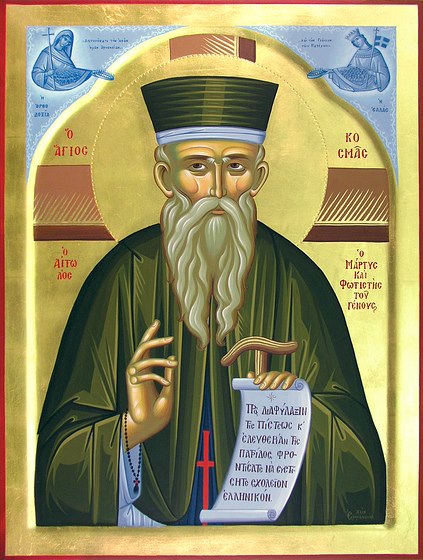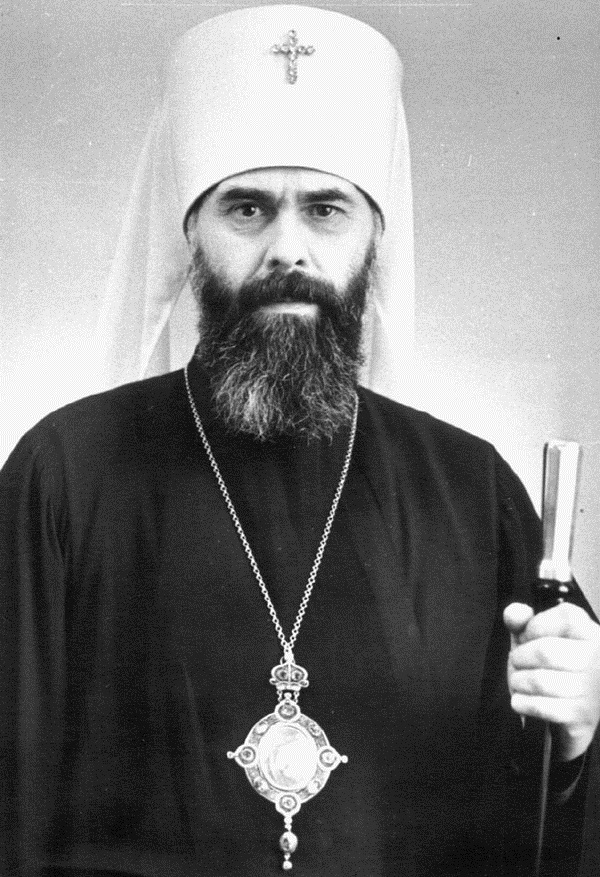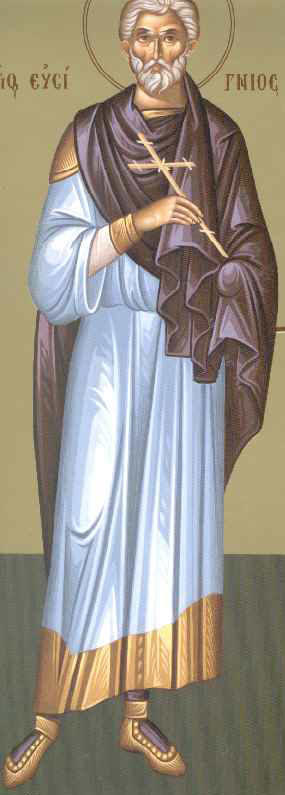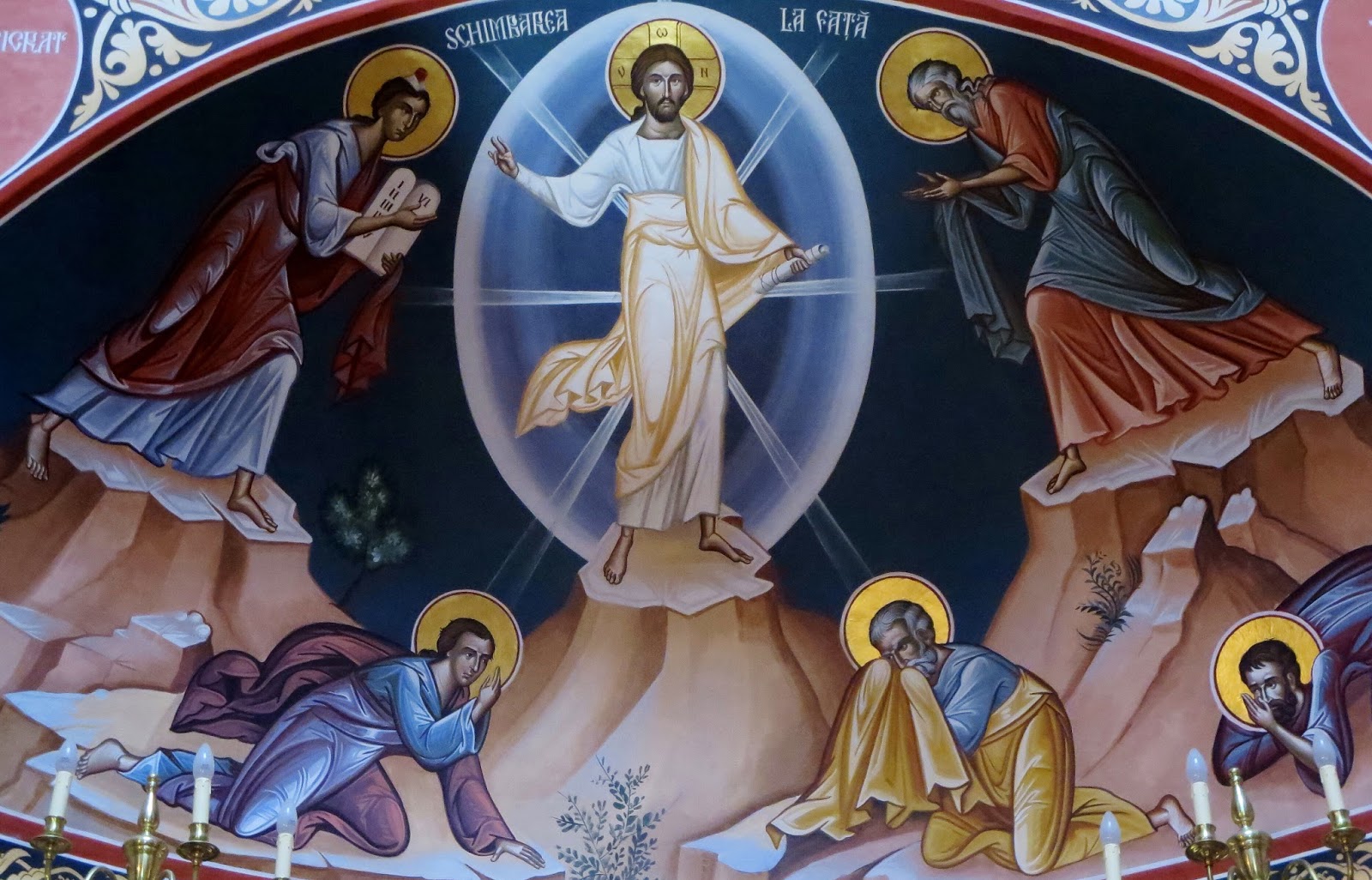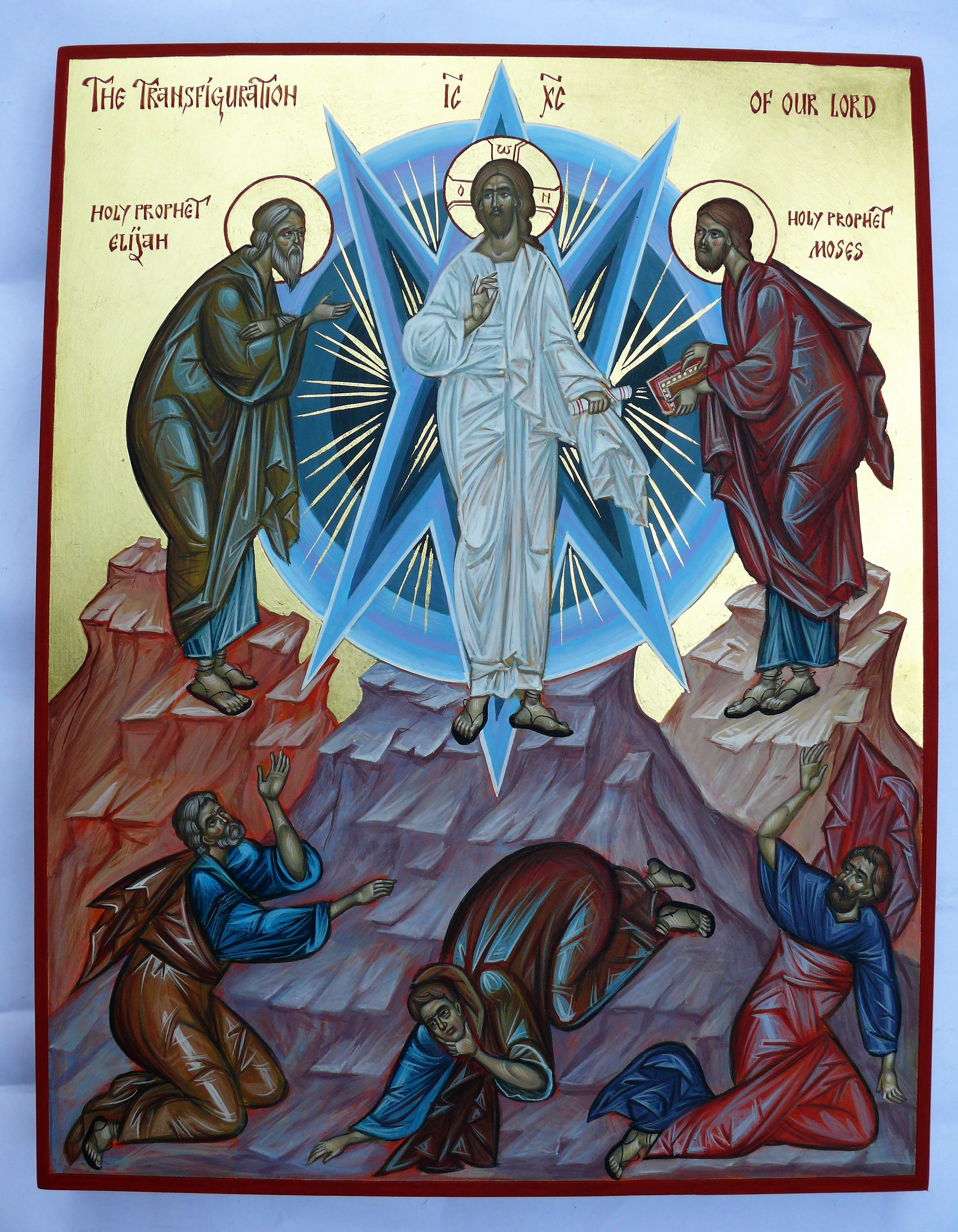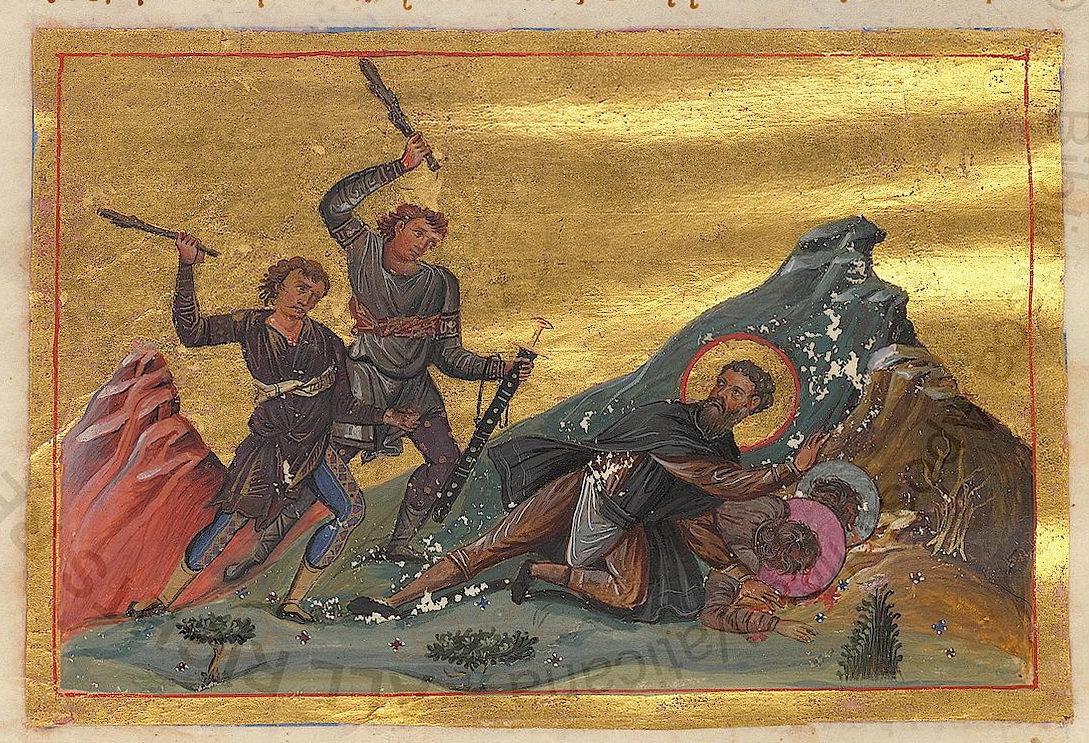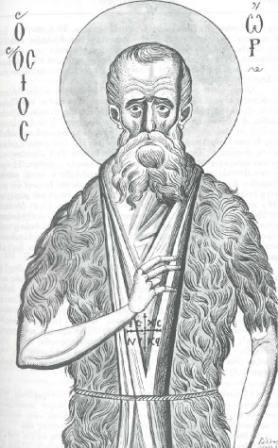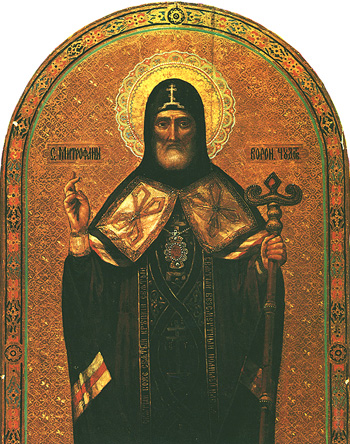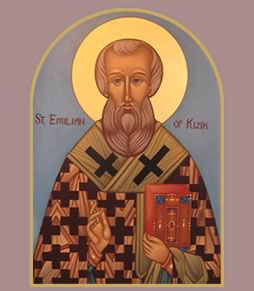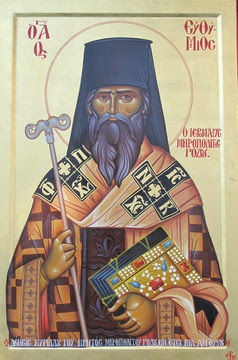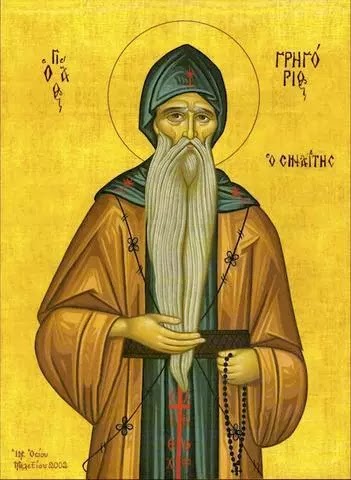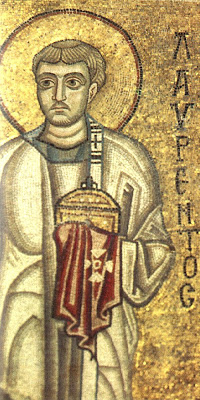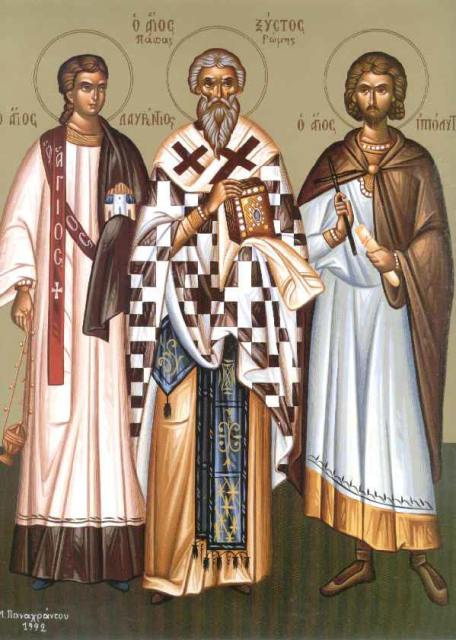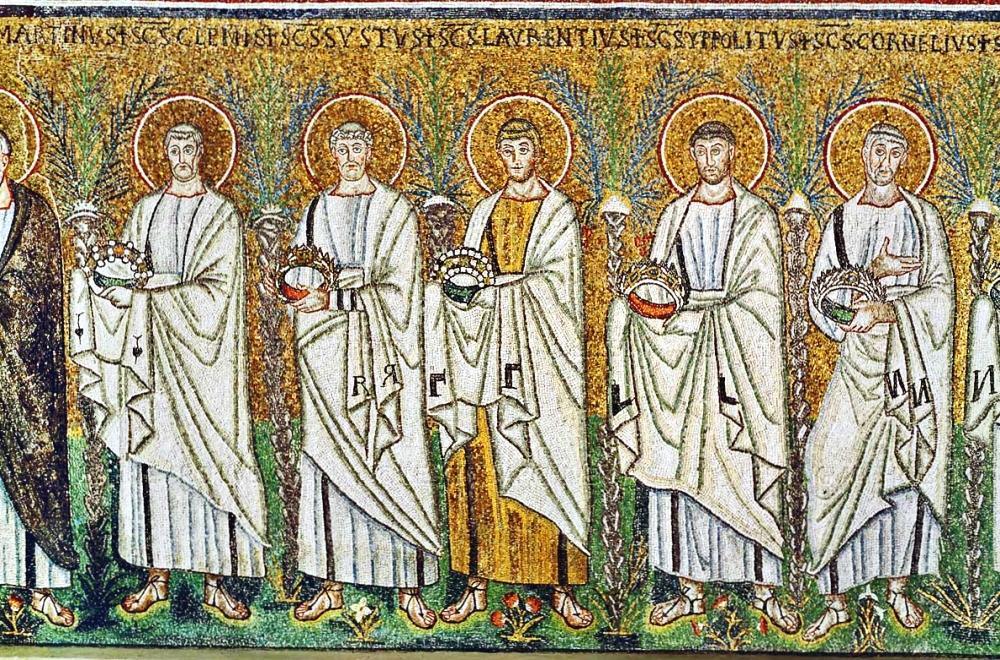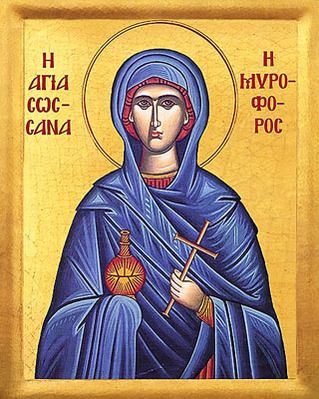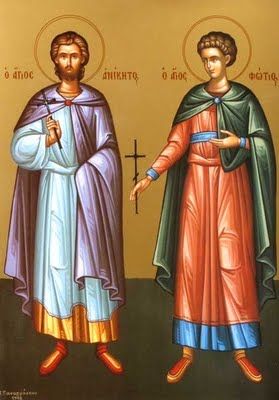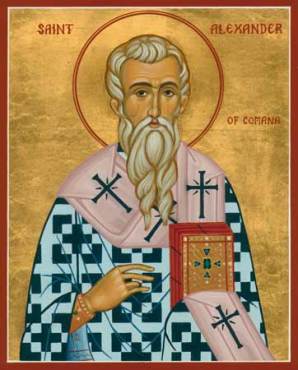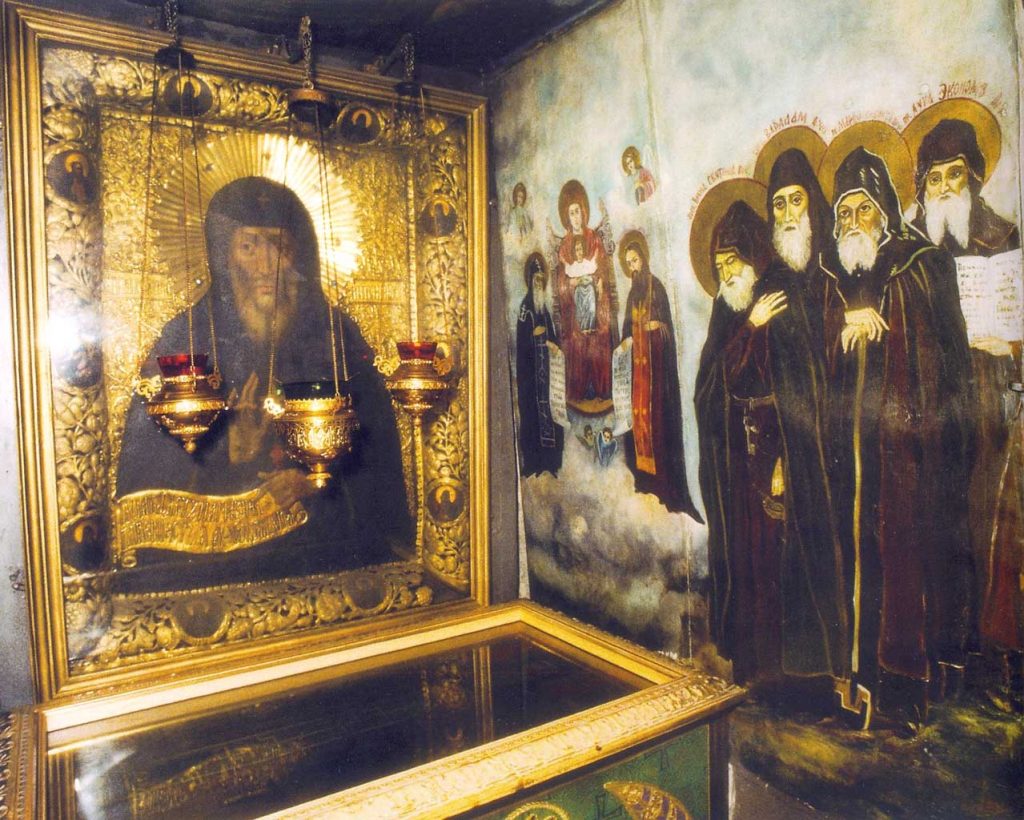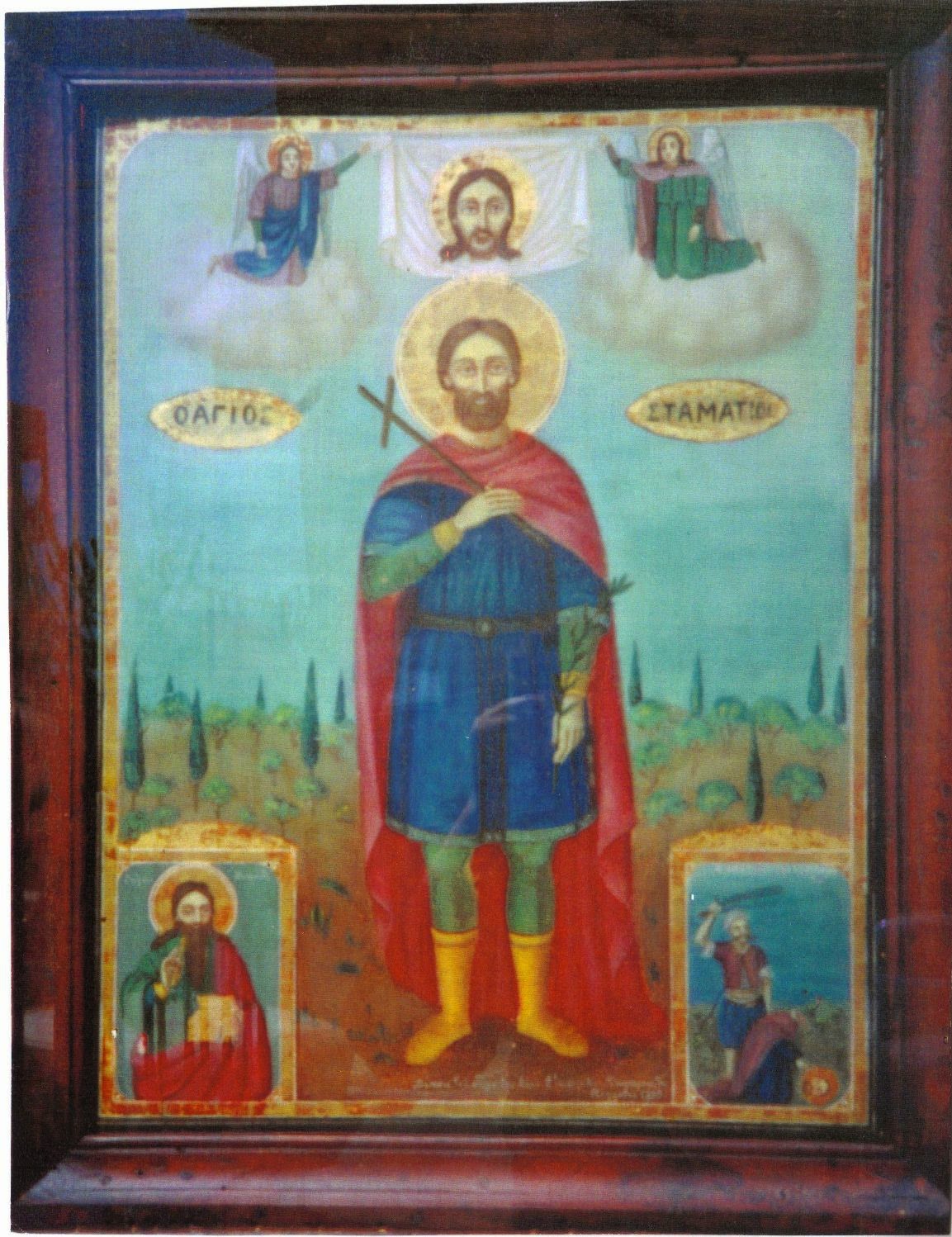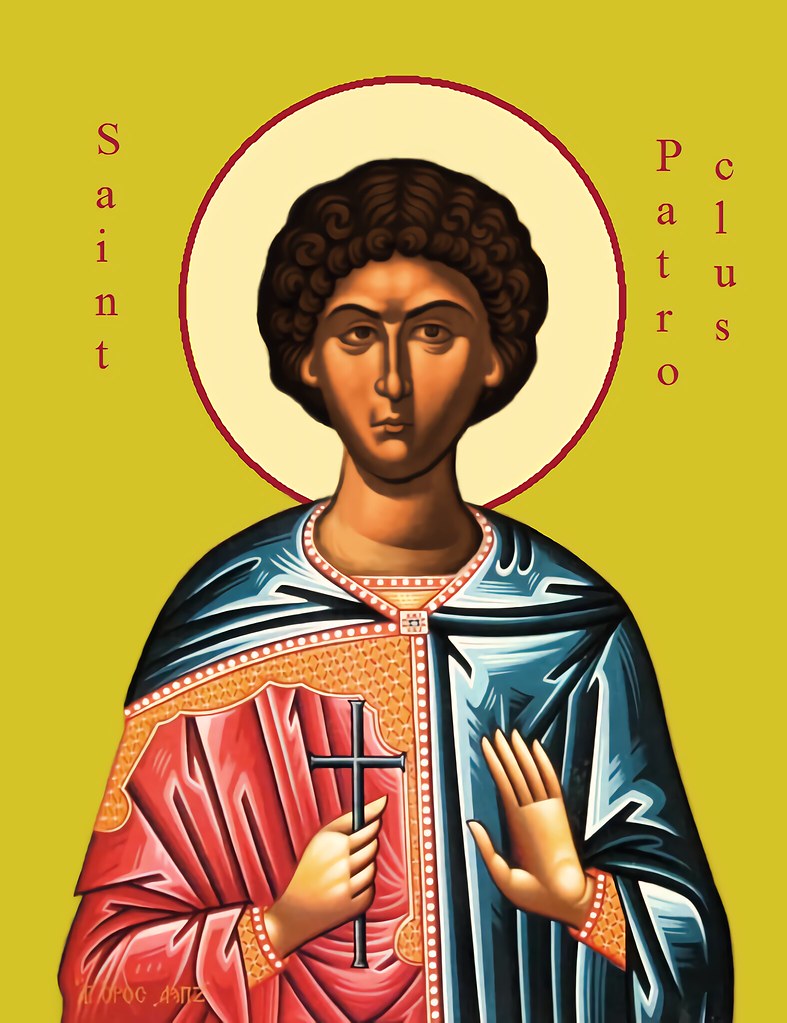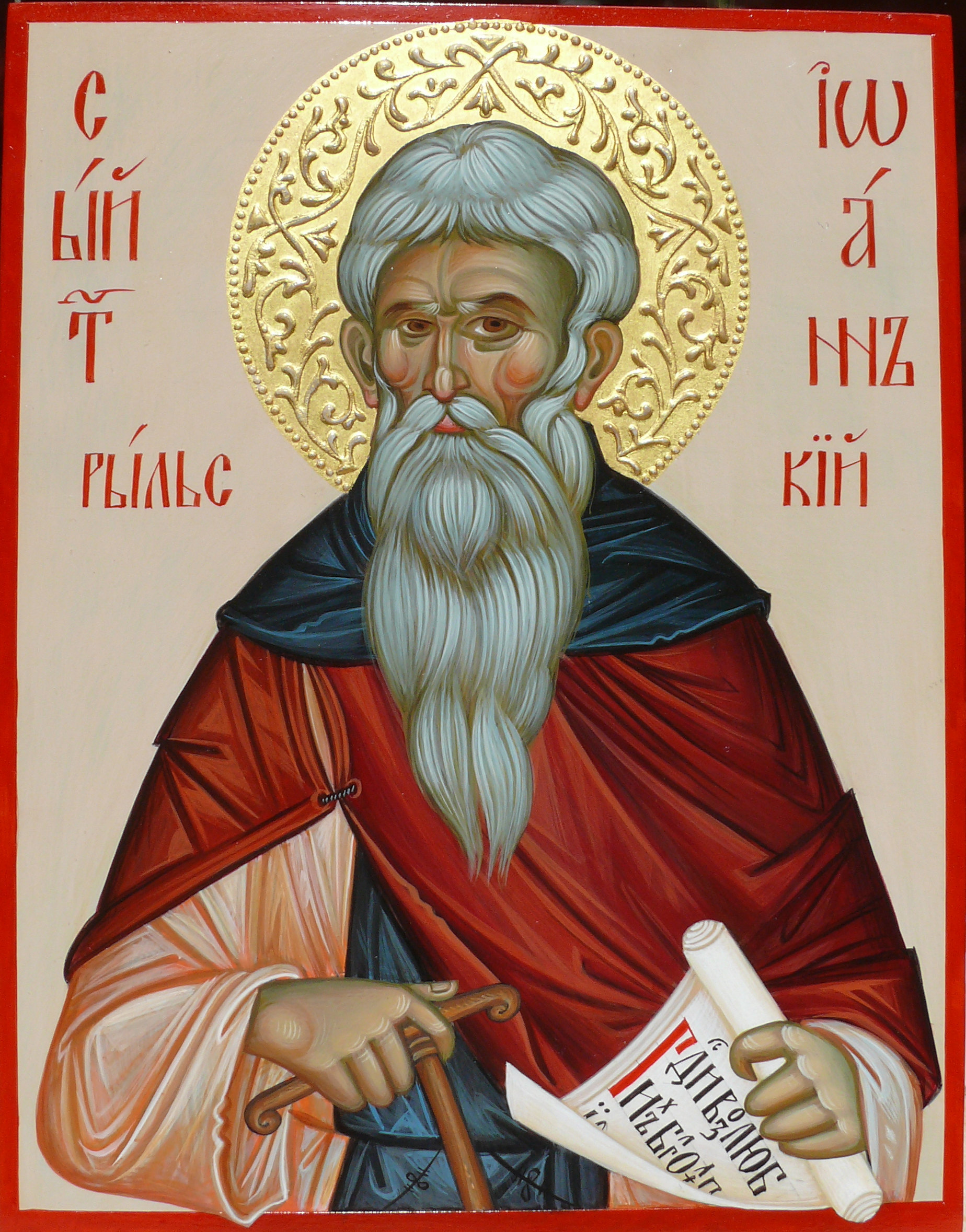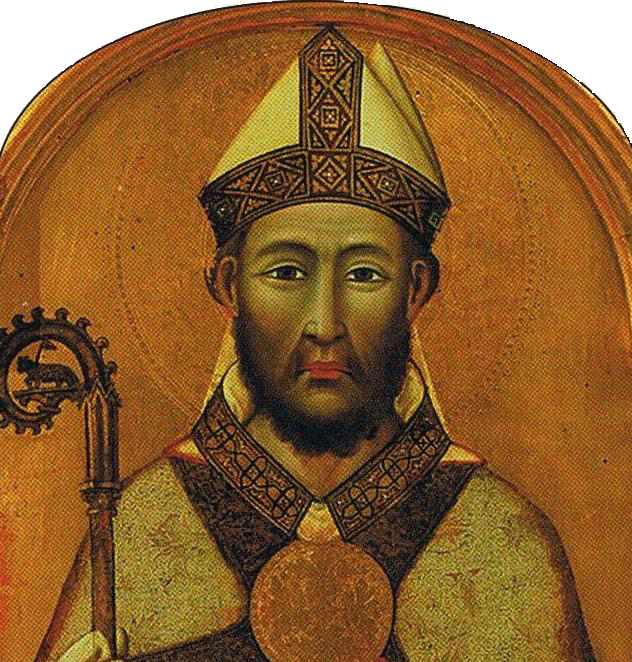- Dec 28, 2017
- 3,779
- 2,856
- Country
- United States
- Faith
- Christian
- Marital Status
- Private
July 30
Lives of the Saints
• Apostles Silas, Silvanus, Crescens, Epenetus, and Andronicus of the Seventy
St Silas was a companion and fellow-worker of the Apostle Paul (see Acts 15). He became Bishop of Corinth and reposed in peace. St Silvanus became Bishop of Thessalonica and reposed in peace. St Crescens, mentioned by St Paul in 2 Timothy 4:10, became Bishop of Chalcedon. St Epenetus, praised by St Paul in Romans 16:5 as "my well-beloved Epenetus, the first-fruits of Achaia" (that is the first Christian from the Greek land) became Bishop of Carthage. St Andronicus and his fellow-worker Junia are also commemorated May 17.
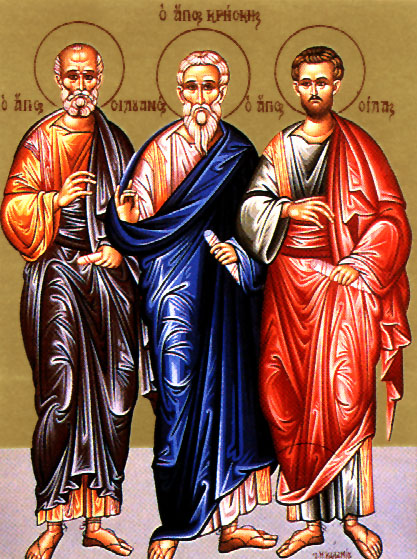

• Hieromarytyr Polychronius, Bishop of Babylon, and those with him (251 A.D.)
"when the Emperor decius conquered Babylon, he arrested Polychronius, together with three priests, two deacons and two baptised princes, Eudin and Senis. Polychronius would make no reply before the Emperor, but kept silent, while St Parmenius, one of the priests, spoke for them all. The Emperor took the bishop and priests to Persia, to the city of Kordoba, and had them beheaded with an axe, but he took the princes with him to Rome, threw them first to the wild beasts and then had them slain with the sword. They all suffered with honour in 251." (Prologue)
• Venerable Angelina, Princess of Albania.
She was the daughter of Scanderbeg, Albania's national hero. She married Stefan, Prince of Serbia, a kinsman of Scanderbeg who sought refuge in his court. Stefan, a gentle, God-fearing man, had been blinded by the Turkish Sultan. Princess Angelina, loving him despite his loss of his vision and his worldly kingdom, married him with her father's blessing. Together they had two sons, George and John. When their sons were grown, Albania was ravaged by an invasion of the Turks. Stefan, with Angelina and their sons, fled to Italy, where they lived until his repose in 1468. The widowed Angelina buried her husband in his Serbian homeland and devoted her remaining years to good works. Her elder son George gave up his princely title and entered monastic life. John married but died without children in 1503. When Angelina had outlived her two sons as well as her husband she too entered monastic life. She was buried with her sons at Krušedol monastery in northern Serbia. There her miracle-working relics are venerated to this day, and a service is held each year in her memory. She, her husband and her two sons are all glorified as saints of the Church.
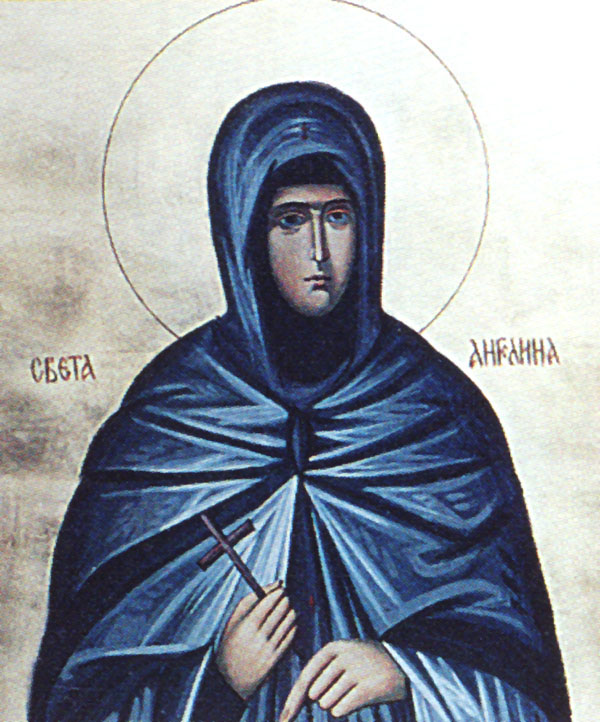
• THE HOLY PRIESTLY-MARTYR VALENTINE
Valentine was the bishop of the Italian City of Interamna. He cured the brother of the Roman tribune, Frontanus, of an illness. When Cherimon, the son of the renowned philosopher Craton, took ill, Craton, taking the advice of Frontanus, summoned Bishop Valentine to Rome. Cherimon was completely contorted, and so bent over that his head was between his knees. Valentine seculded himself in a room with Cherimon and spent the entire night in prayer. The next day he brought Cherimon out completely healed and presented him to his father. Then Craton, his entire household, and three of his disciples were baptized. Cherimon left the home of his father and went with Valentine. Abundius, the son of the Roman eparch, was also baptized then. Enraged at this, the eparch arrested Valentine and beheaded him after much torture. Three disciples of Craton: Proclus, Abibus and Apollonius, were also beheaded then. Abundius took their bodies and buried them with honor. They all suffered in the year 273 A.D. and became citizens of the Heavenly Kingdom.
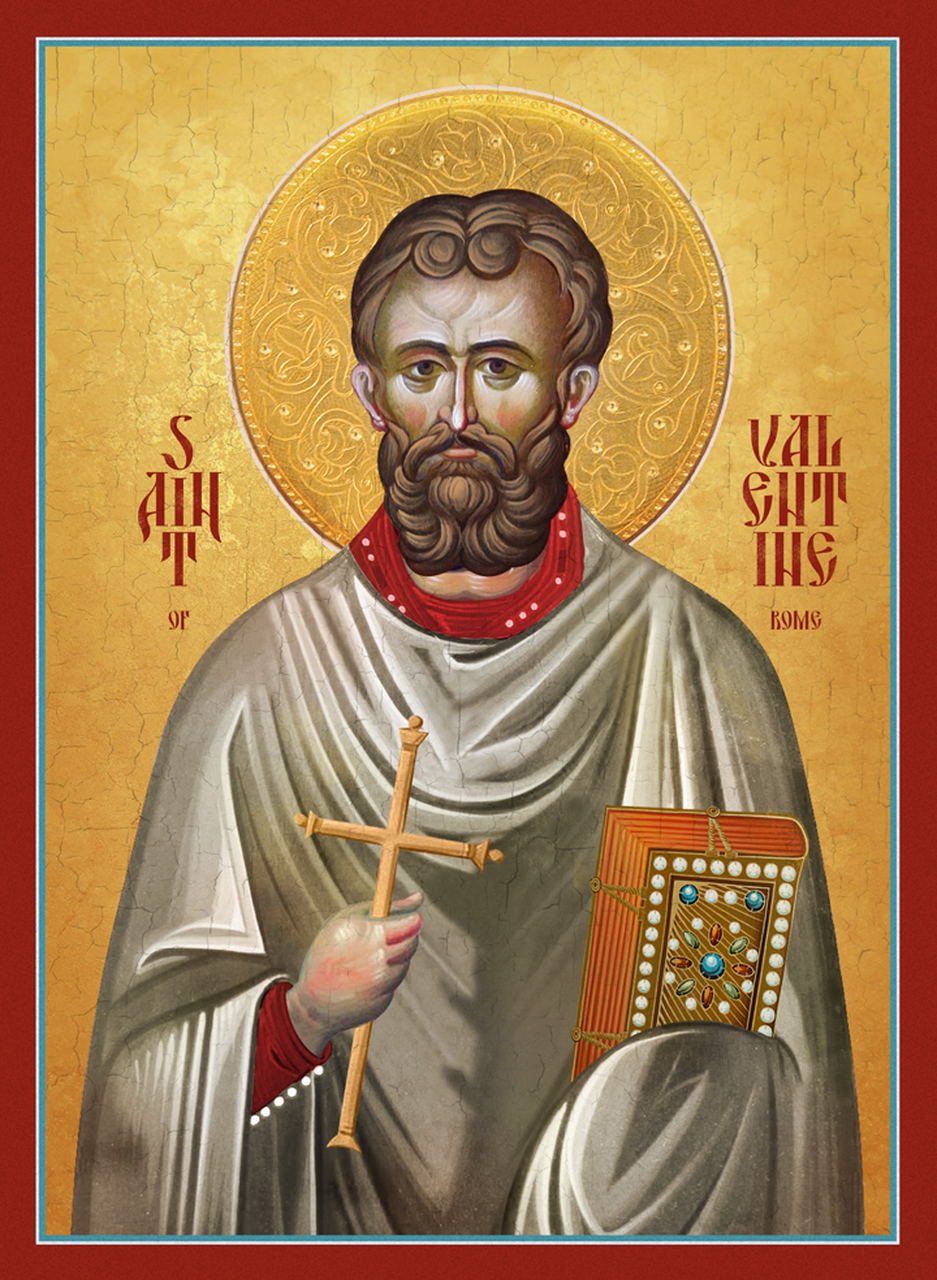
• SAINT JOHN THE SOLDIER
John was secretly a Christian. He was sent by Emperor Julian the Apostate to slay Christians, but helped them to hide instead. Julian cast him into a prison in Constantinople. When the evil Emperor Julian perished, John gave himself over to a life of asceticism, living in purity and holiness. He died peacefully in old age. After his death, he appeared to those who needed his help. Prayers directed to St. John are of help in tracking down robbers.
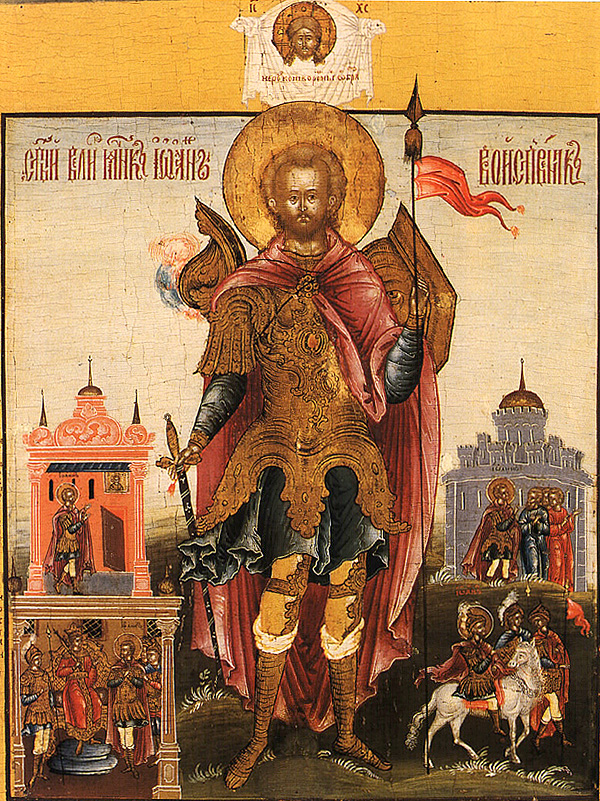
• Saint Tsotne Dadiani the Confessor
Saint Tsotne Dadiani the Confessor
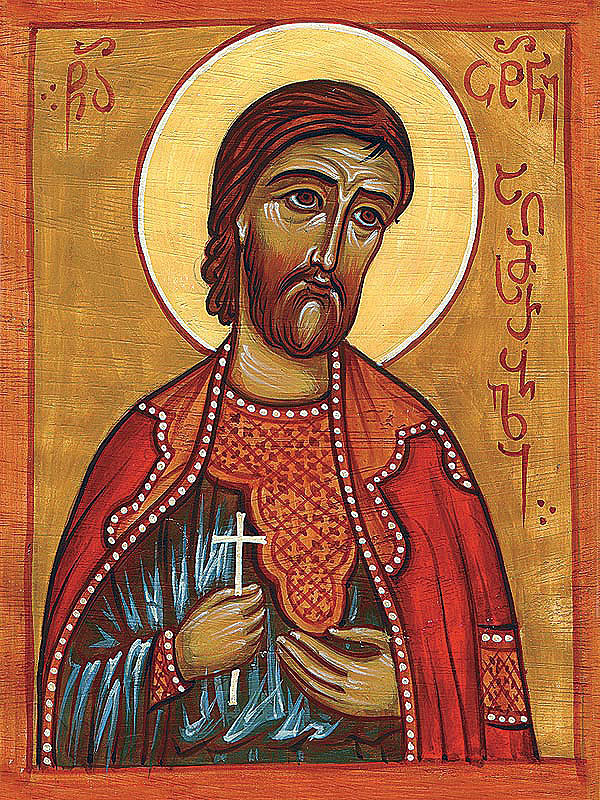
.
Lives of the Saints
• Apostles Silas, Silvanus, Crescens, Epenetus, and Andronicus of the Seventy
St Silas was a companion and fellow-worker of the Apostle Paul (see Acts 15). He became Bishop of Corinth and reposed in peace. St Silvanus became Bishop of Thessalonica and reposed in peace. St Crescens, mentioned by St Paul in 2 Timothy 4:10, became Bishop of Chalcedon. St Epenetus, praised by St Paul in Romans 16:5 as "my well-beloved Epenetus, the first-fruits of Achaia" (that is the first Christian from the Greek land) became Bishop of Carthage. St Andronicus and his fellow-worker Junia are also commemorated May 17.
• Hieromarytyr Polychronius, Bishop of Babylon, and those with him (251 A.D.)
"when the Emperor decius conquered Babylon, he arrested Polychronius, together with three priests, two deacons and two baptised princes, Eudin and Senis. Polychronius would make no reply before the Emperor, but kept silent, while St Parmenius, one of the priests, spoke for them all. The Emperor took the bishop and priests to Persia, to the city of Kordoba, and had them beheaded with an axe, but he took the princes with him to Rome, threw them first to the wild beasts and then had them slain with the sword. They all suffered with honour in 251." (Prologue)
• Venerable Angelina, Princess of Albania.
She was the daughter of Scanderbeg, Albania's national hero. She married Stefan, Prince of Serbia, a kinsman of Scanderbeg who sought refuge in his court. Stefan, a gentle, God-fearing man, had been blinded by the Turkish Sultan. Princess Angelina, loving him despite his loss of his vision and his worldly kingdom, married him with her father's blessing. Together they had two sons, George and John. When their sons were grown, Albania was ravaged by an invasion of the Turks. Stefan, with Angelina and their sons, fled to Italy, where they lived until his repose in 1468. The widowed Angelina buried her husband in his Serbian homeland and devoted her remaining years to good works. Her elder son George gave up his princely title and entered monastic life. John married but died without children in 1503. When Angelina had outlived her two sons as well as her husband she too entered monastic life. She was buried with her sons at Krušedol monastery in northern Serbia. There her miracle-working relics are venerated to this day, and a service is held each year in her memory. She, her husband and her two sons are all glorified as saints of the Church.
• THE HOLY PRIESTLY-MARTYR VALENTINE
Valentine was the bishop of the Italian City of Interamna. He cured the brother of the Roman tribune, Frontanus, of an illness. When Cherimon, the son of the renowned philosopher Craton, took ill, Craton, taking the advice of Frontanus, summoned Bishop Valentine to Rome. Cherimon was completely contorted, and so bent over that his head was between his knees. Valentine seculded himself in a room with Cherimon and spent the entire night in prayer. The next day he brought Cherimon out completely healed and presented him to his father. Then Craton, his entire household, and three of his disciples were baptized. Cherimon left the home of his father and went with Valentine. Abundius, the son of the Roman eparch, was also baptized then. Enraged at this, the eparch arrested Valentine and beheaded him after much torture. Three disciples of Craton: Proclus, Abibus and Apollonius, were also beheaded then. Abundius took their bodies and buried them with honor. They all suffered in the year 273 A.D. and became citizens of the Heavenly Kingdom.

• SAINT JOHN THE SOLDIER
John was secretly a Christian. He was sent by Emperor Julian the Apostate to slay Christians, but helped them to hide instead. Julian cast him into a prison in Constantinople. When the evil Emperor Julian perished, John gave himself over to a life of asceticism, living in purity and holiness. He died peacefully in old age. After his death, he appeared to those who needed his help. Prayers directed to St. John are of help in tracking down robbers.
• Saint Tsotne Dadiani the Confessor
Saint Tsotne Dadiani the Confessor
.
Upvote
0

